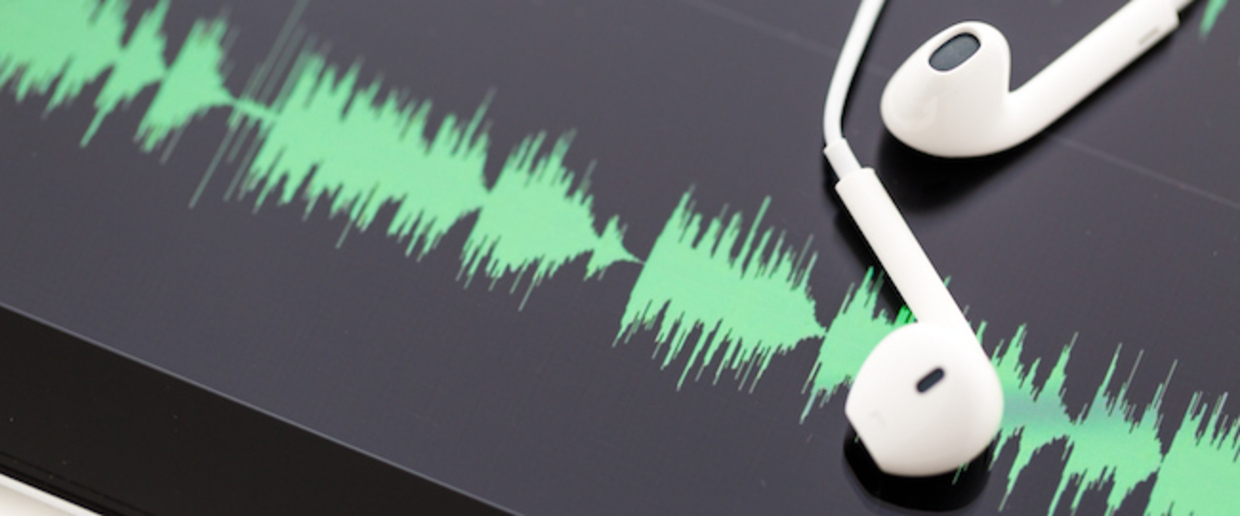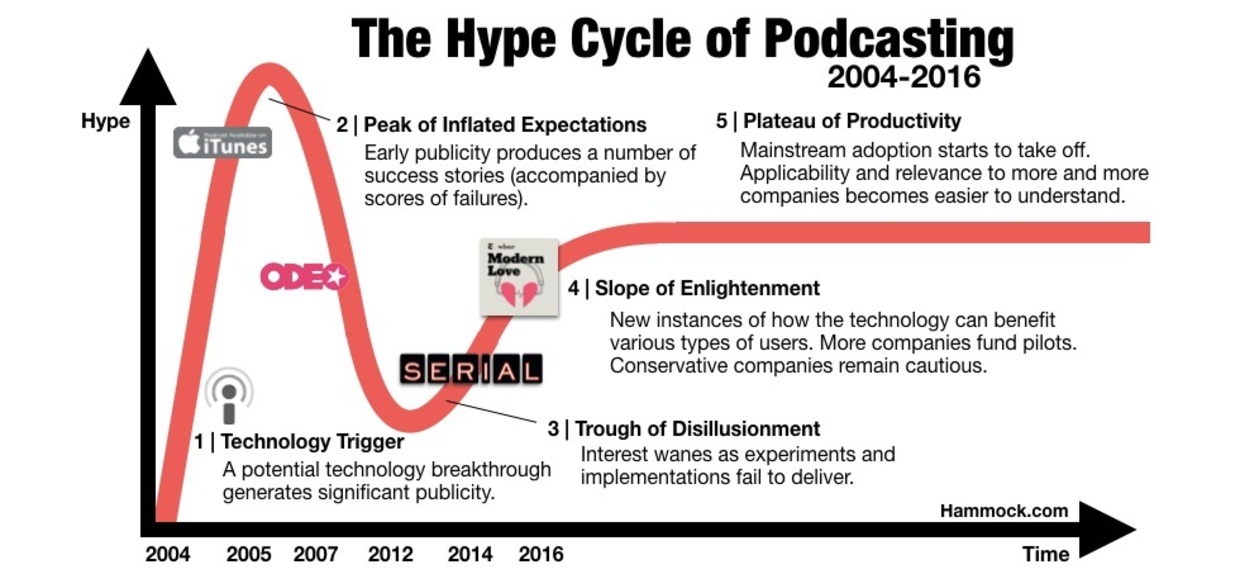

Idea: Why Podcasting Is, Once Again, The Next Big Thing
Amara’s Law: “We tend to overestimate the effect of a technology in the short run and underestimate the effect in the long run.”
—Roy Amara (1925–2007), Stanford Research Institute
By Rex Hammock
Just as conventional wisdom was writing off podcasting, it’s suddenly this year’s “it” media. Two weeks ago, The New York Times joined The Guardian, Wall Street Journal, NPR and other media companies to announce the creation of a team focused entirely on developing podcasts.
At the same time, NPR, Spotify, Audible.com and others have launched a new generation of mobile apps that pre-select and stream topic-specific podcasts. (Listeners typically download and play podcasts using “podcatchers” like Apple’s Podcast app and Stitcher.)
Since the advent of the RSS feature that enables an easy means to distribute audio files (attaching them to a blog post, for example), podcasting has traveled a classic “hype cycle” journey—a concept inspired by Amara’s Law (above) but branded by Gartner Research, who developed the graph line below. (We’ve adapted it with our estimation of podcasting’s timeline.)

The New York Times podcasting history is a good example of the hype cycle journey of many major media companies (and corporate marketers using direct-to-customer podcasts). The Times jumped into podcasting early. During the roller-coaster ride up to the “peak of inflated expectations,” the Times launched a dozen podcasts that were promotional (no revenue) talk shows featuring reporters who cover a single topic. In 2011, during the “trough of disappointment,” the company pulled the plug on all but three of those podcasts. And now it’s taking a “slope of enlightenment” approach by focusing on revenue-generating programming.
Why now? The obvious reason is WBEZ Chicago’s “Serial,” the runaway-success podcast documentary series hosted by This American Life‘s Sarah Koenig of NPR’s Chicago affiliate. “Serial” not only attracted a massive audience (more than 40 million downloads), it revealed how podcasting can be riveting journalism edited in a storytelling style that uses techniques more often found in a music recording studio than in a news department.
In January, the Times launched its first “enlightened” podcast, Modern Love, an advertising-supported podcast co-produced with WBUR, the Boston public radio station. The podcast already has 500,000 subscribers and is providing a roadmap for NYTimes.com strategy.
Bottom Line for Marketers: The next podcast enlightenment slope will involve corporate marketers developing direct-to-customer podcasts that go beyond promotional audioblog posts. Use your commute or workout time to listen to consumer and business podcasts that are setting the pace in your market niche. If you can’t find one setting such a pace, it’s time to start one yourselves. If you need help, call us.


